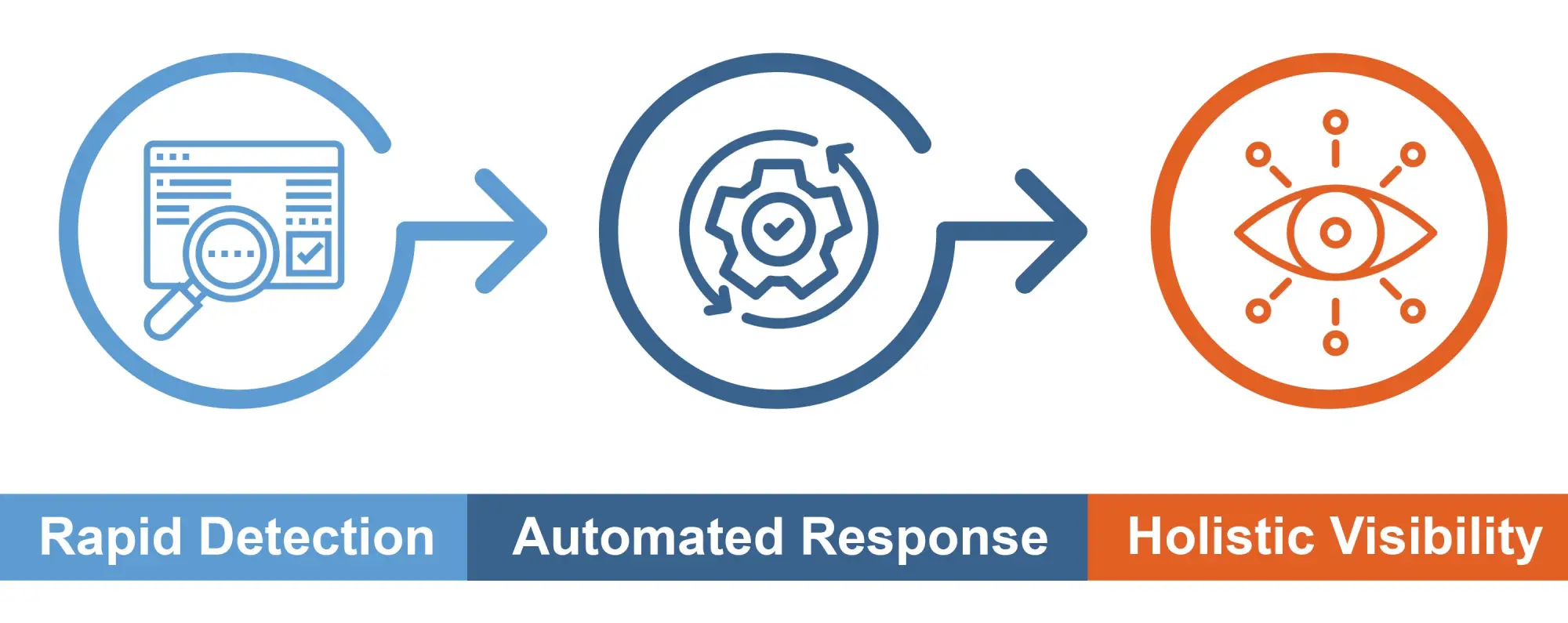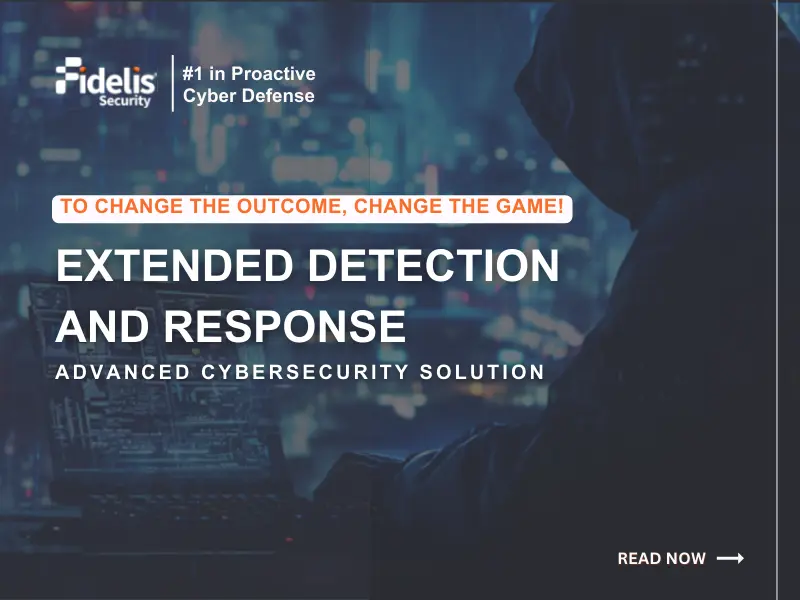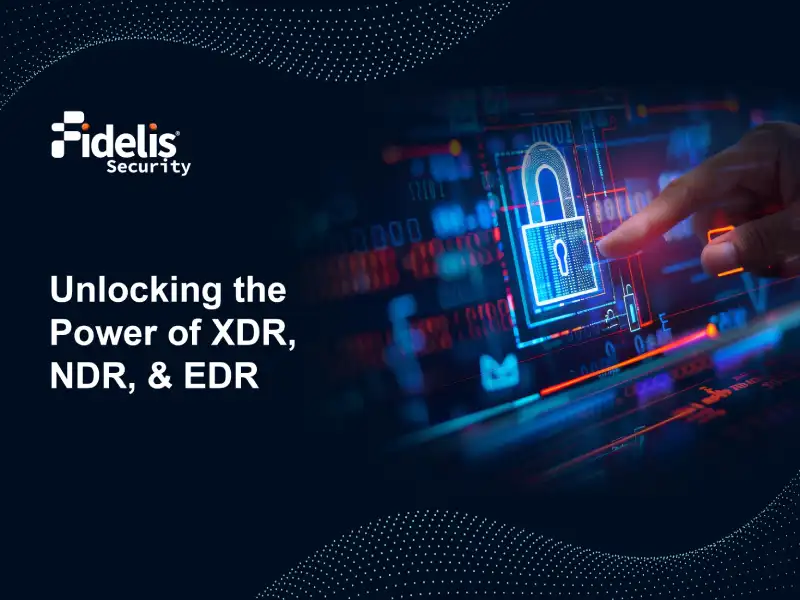Cyber threats hide everywhere, and the numbers are shocking—more than 80% of companies dealt with a major security problem last year. The usual safety steps just don’t work well enough now leaving too many openings for attackers to sneak through.
This is where Extended Detection and Response (XDR) comes in. XDR brings together information from computers, networks, and the cloud into one system giving security teams the power to spot and tackle threats better. As cybercriminals get smarter, using XDR is key to protect your company’s future.
Why Do You Need XDR? 5 Key Security Benefits
In modern cybersecurity, the ultimate need remains an XDR platform.
Here is the breakdown of five key reasons why XDR solutions can help your business stay secure and ahead of potential threats:
1. Improved Prevention Capabilities
It allows you to not react to threats but to always stay ahead of them. This technology is inclusive of threat intelligence and adaptive machine learning against a very wide variety of attacks. Continuous monitoring and automated threat response can stop a threat as soon as it is detected. This helps reduce the chances of damage.
2. Granular Visibility
It gives you full visibility into what’s going on across endpoints, networks, and applications. You can see a complete view of your system.
This includes user data, access permissions, and files in use. This applies to both on-premises and cloud environments. This holistic view allows for quick detection and response to threats thus enabling faster threat detection and prevention.
3. Effective Response
What XDR solutions exceptionally excel at, however, is incident response. They collect large amounts of data.
They follow the attack path and rebuild what the attackers did. This gives them valuable insight into where the attackers are hiding. You can, thus, catch them with their hands in the cookie jar and fortify your defenses henceforth.
4. Greater Control
Having XDR security lets you control which traffic and processes are allowed. This means only authorized activities can happen in your system. Tight control on who and what gets access to your network is exactly one of the ways one keeps his environment safe and decreases vulnerabilities.
5. Improved Productivity
XDR can mitigate alert fatigue. Now, all your alerts will be centralized and improved. This helps your security teams avoid wasting time on false positives. Reducing false positive noise is an added benefit.
How XDR Works To Reduces Dwell Time?

Gartner says, “using XDR organizations have managed to decrease threat dwell time up to 85% and also improve their incidence of response capabilities.”
Here’s how XDR works to minimize that gap and keep attackers from lingering in your network:
1. Rapid Detection Capabilities
- XDR technology can quickly find unusual activity that may indicate a breach.
- It does this by gathering data from different sources and using machine learning.
- Instead of waiting days or weeks to find a problem, XDR security can often spot threats in minutes or hours.
- This helps security operations centers (SOC) respond much more quickly.
2. Automated Response Playbooks
- With security orchestration, automation, and response (SOAR) features, XDR platforms do more than find threats—they respond to them.
- These platforms have automated response plans. They can start containment actions as soon as a breach is found.
- This cuts down the time attackers have to move around within your environment, limiting potential damage.
3. Holistic Visibility
- One of the greatest strengths of XDR solutions is their ability to give security teams complete visibility across the entire IT environment.
By centralizing data from endpoints, networks, and even the cloud, XDR helps pinpoint the root cause of issues faster, allowing for quicker remediation and a significant reduction in dwell time.
How does XDR differ from traditional security methods?
| Advanced XDR | Traditional XDR | |
|---|---|---|
| 1. Data Integration | XDR harvests and correlates data from endpoints, networks, servers, and cloud environments for full visibility. | Traditional methods rely on siloed solutions that don't integrate data from different sources. |
| 2. Automated Response | XDR provides deep automation for instant responses across environments. | Traditional methods require manual intervention, increasing time-to-response and risk of damage. |
| 3. Threat Detection | XDR uses advanced analytics and machine learning for complex attack detection. | Traditional approaches rely on signature-based detection, missing newer or blended threats. |
| 4. Simplified Management | XDR integrates event management and responses in a single console, improving efficiency. | Traditional methods use disparate tools, creating more overhead and making it harder to derive insights. |
| 5. Behavioral Context | XDR uses UEBA for detecting anomalies and insider threats through behavioral analysis. | Traditional methods lack behavioral analysis, making insider threat detection more difficult. |
How XDR Integrates with Existing Tools like NDR, EDR, and SIEM
One of the reasons XDR has become so popular is how seamlessly it integrates with existing security tools, such as Network Detection and Response (NDR), Endpoint Detection and Response (EDR), and Security Information and Event Management (SIEM) systems.
1. Data Aggregation
XDR collects and centralizes data from all of these tools—whether it’s logs from SIEM, alerts from NDR, or activity from EDR.
This data is then displayed on a single platform, giving security teams a unified view of the entire security landscape, which enhances situational awareness and improves overall response.
2. Enhanced Correlation
By correlating data and alerts from EDR, NDR, and SIEM, XDR solutions boost detection accuracy. Instead of dealing with separate alerts that seem unrelated, XDR connects everything. This helps security teams manage incidents better and respond to complex threats with more confidence.
3. Complementary Functionality
While SIEM is excellent for log management and compliance, XDR adds real-time threat response capabilities. These two tools work well together. XDR improves SIEM without taking its place. It offers faster threat detection and response. Meanwhile, SIEM still manages log aggregation and compliance tasks.
Four Key Capabilities of Extended Detection and Response (XDR)
The best extended detection and response solution can deliver many capabilities beyond the capabilities of traditional security tools. Let’s start unpacking the top four ways XDR works to protect your organization:
1. Collecting Data Across Multiple Security Layers
XDR consolidates security data from diverging sources, analyzes both external and internal traffic, and thereby identifies threats that otherwise would have escaped the purview of traditional perimeter defenses. Combining intelligence on threats with machine learning, XDR detects known attacks, zero-day threats, and unknown vulnerabilities.
2. Advanced Analytics for Automated Investigation
XDR blends and correlates alerts from multiple silos to create a singular attack timeline using advanced analytics. This helps give broad visibility into incidents over various attack vectors, really painting the complete picture of an attack. Automated investigations streamline the process, letting teams respond effectively with minimal delay and extra false positives.
3. Prompt detection, response, and investigation
XDR solutions provide you with a centralized interface through which you can control incidents, irrespective of their location in your network. The detection and response capabilities of XDR include orchestration and automation, enabling it to interface with other tools. For example, XDR can instantly update endpoint protection policies or change spam filters across your organization.
4. Elastic Deployment SaaS-Based
XDR uses cloud technology to optimize security operations and boost scalability. Through automation and further integration of all the existing security tools, their value is maximized in XDR. Continuous improvement by way of machine learning or SIEM analysis strengthens your security posture. The cloud-based version of XDR also simplifies the management of security and powers automated response capabilities.
Is XDR Better than EDR?
The XDR system expands on EDR, which stands for Endpoint Detection and Response. It goes beyond just focusing on one endpoint. Although EDR is highly valuable in protecting the single device, the limitation of monitoring only the endpoint still holds. As mentioned above, modern threats include the aspect of moving across multiple vectors, which is where XDR comes into play.
XDR solutions build on EDR’s endpoint protection for security. They go further by adding detection and response NDR. They also include security orchestration automation and other security layers.
This broader view gives better visibility. It helps XDR find and respond to threats that bypass endpoint defenses. These threats may try to enter through the network or cloud/email systems instead.
XDR centralizes disparate data, hence, giving a view of threats across your environment. This means a security team will get to see the big picture rather than a tiny fraction of the attack story. The holistic way that XDR employs improves detection accuracy and response speed, hence making XDR more comprehensive than using EDR alone.
Key highlights include:
- Unified, all-encompassing defense
- cross-platform visibility
- 9x faster threat response
Start with Fidelis Elevate XDR: A Must-Have for Next-Level Cyber Defense
Fidelis Elevate® is an automated Extended Detection and Response (XDR) platform built for proactive cyber defense. It streamlines your security team’s objectives while meeting the demands of adaptive security architecture.
With 9X faster threat detection, Fidelis Elevate® empowers IT security teams to efficiently combine deception technology with traditional detection and response across network, endpoint, and cloud security. This approach reshapes the attack surface, allowing your teams to spot and neutralize threats before they cause harm.
Elevate your defenses today with Fidelis Elevate XDR®, contact us today—because effective security is a must-have!
Frequently Ask Questions
Why is XDR Important?
XDR helps to reduce the likelihood of incidents that would otherwise significantly impact an organization and its customers. It provides contextual intelligence on actual attacks that can help the analyst understand, contain, and eradicate the threat much more quickly.
It does this by using various data sources from the whole cybersecurity ecosystem. This includes endpoints, networks, cloud resources, and more. It helps analysts see the entire kill chain clearly.
Also, XDR can help an organization use its limited talent and resources more efficiently. XDR is a single platform, not just a mix of tools.
This makes it an all-in-one security solution. It simplifies deployment, upgrades, expansion, and management. There may not be a need for long training and certifications. This could help Tier 1 security analysts work more efficiently.
What is the difference between XDR and SIEM tools?
XDR is different from SIEM tools because it provides an integrated approach toward threat detection, investigation, and response. It collects data from various sources and offers one to automate security responses. XDR solutions are also usually much easier to use and deploy and manage than classical SIEM tools.
How does XDR work?
XDR encompasses the integration of data emanating from the security sources spread out on endpoints, networks, and cloud services, which it proceeds to analyze in search of signs of threats and vulnerabilities. It further comprises automation capabilities, such as blocking malicious IP addresses or even disabling accounts.



